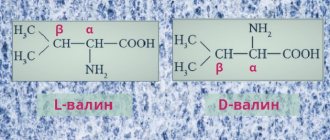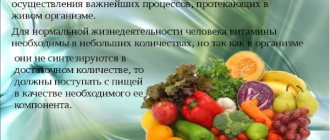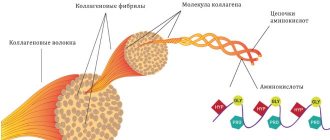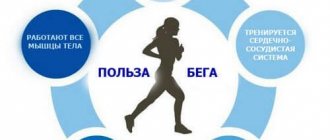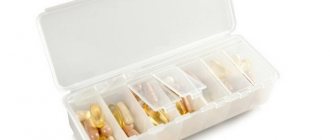The role of zinc in the body
Zinc in food most of all helps the body develop properly. It is involved in many processes. But the body only needs a certain amount of zinc. Its excess or deficiency is poorly perceived by the human body.
The importance of zinc in human life is invaluable:
- Thanks to zinc, bones and teeth become stronger.
- The trace element is actively involved in the breakdown of proteins, fats and carbohydrates.
- Zinc plays an important role in DNA synthesis.
- Zn controls the functioning of the sebaceous glands.
- Thanks to zinc, cells renew themselves faster, which improves the skin.
- Zn increases the number of hormones.
- With the help of zinc, vitamin A dissolves more easily.
- Thanks to zinc, inflammation stops and wounds heal faster.
- The trace element is part of hormones, enzymes and molecules and helps the body function normally.
- The microelement reduces blood sugar levels.
- When consuming zinc, vision improves and the retina becomes stronger.
- The formation of hydrochloric acid is also associated with zinc.
- Improves the functioning of the immune system.
- Zinc is involved in metabolism.
- With the help of zinc, the nervous system becomes more resistant to various stresses.
- Zinc is of great importance in the sex life of people. In men, testosterone levels depend on this element. In women, it affects the synthesis of lubricant.
Animal food
It is worth noting that the amount of zinc and selenium in an animal’s meat is affected by the food it was fed. There are enough of these elements in grain crops that have not been peeled (much depends on their presence in the soil in which these grains were grown). Selenium is also present in wholemeal flour and sea salt. In chicken yolks you can find not just selenium, but also additional vitamins such as E and K.
Having decided to replenish the smell of selenium with the help of marine life, we must not forget that as part of heat treatment, the content of this microelement decreases. The maximum benefit will come, for example, from tartare made from freshly caught tuna.
The benefits and harms of zinc
Zinc plays a key role in the development of the body of men and women. About 90% of this metal is found in bones and muscles. What is its benefit?
For example:
- Zinc is involved in many physiological processes that help humans function normally.
- For men:
- zinc helps synthesize testosterone;
- increases sperm quality;
- the microelement is a prophylactic against prostate adenoma.
- Among women:
- during pregnancy, zinc serves as an assistant for the baby so that the child can better absorb vitamins and increase weight;
- zinc helps the child develop and grow properly;
- the microelement is responsible for puberty and makes menstruation less painful;
- In older women, zinc prevents early menopause.
- Zinc activates the growth of hair and nails, making them less brittle.
- If any inflammation appears on the body, zinc can quickly cope with it.
- Taking zinc may delay the appearance of gray hair.
- Zinc can be found in many cosmetic products that are aimed at improving skin condition.
- Zinc is actively used for burns and after operations; it makes it possible to increase the healing time of wounds.
- The trace element can reduce or relieve headaches, as well as strengthen memory.
- Together with zinc, many vitamins are better absorbed.
- Zinc cleanses the body of toxins.
But there are also a number of disadvantages:
- It is believed that if you consume more than 150 mg of zinc per day, and this is almost 10 times more than the norm, then this trace element will be dangerous to human life.
- If a person at work often breathes zinc vapor, this can cause frequent acute respiratory viral infections, as well as kidney and liver failure.
- You should not take zinc with diuretics and pancreatic enzymes.
- With a lack of this element, symptoms are observed that can subsequently lead to diseases.
- If there is a lot of zinc in the body, it can cause poisoning or even death. This is unlikely to occur when consuming food. Therefore, you should not take zinc utensils, since food or water oxidizes in such containers, and the person receives a dose of zinc.
Deficiency and excess
Zinc deficiency, in contrast to overdose, is a common phenomenon that is especially common in people living in regions with depleted soil or an excess of copper ions in water (America, Australia, Russia, Ukraine).
Other causes of zinc deficiency:
- poor supply of the element with food;
- chronic diseases of the kidneys, liver, intestines;
- impaired nutrient absorption, including vegetarianism;
- sickle cell anemia;
- malignant tumors;
- decreased thyroid function;
- damage to the pancreas;
- long-term use of corticosteroids, estrogens, diuretics;
- helminthic infestations;
- mechanical injuries, especially extensive burns;
- excessive concentration of heavy metal salts (cadmium, mercury, lead, copper) in the body;
- consequences of surgical intervention (short bowel syndrome, artificial communication of the ileum and jejunum);
- abuse of alcohol, caffeine.
The symptoms of zinc deficiency are extremely variable, due to damage to various organs, tissues and body systems. Signs of microelement deficiency:
- deterioration in the functional state of hair and nails (alopecia, decreased pigmentation of individual strands, slower hair growth, delamination of the horny plates);
- weight loss;
- skin diseases (dermatitis, eczema, psoriasis, furunculosis, scaly rashes on the body, acne, dry skin, slow wound healing, trophic ulcers);
- neurological disorders (changes in gait and speech, hyperactivity, trembling of limbs, decreased attention, dementia, sleep disturbance, depression, fatigue);
- eye damage (cataracts, inflammation of the conjunctiva, corneal edema);
- loss of sense of smell, taste disorders, occurrence of ulcers in the oral cavity;
- decreased immunity (frequent respiratory diseases, allergic reactions);
- growth retardation, delayed puberty in children;
- dyspeptic disorders;
- decrease in insulin concentration in the blood.
A prolonged lack of zinc in the body is fraught with decreased function of the pituitary gland and gonads, impaired carbohydrate metabolism, an increased risk of neoplasms, and the occurrence of prostate adenoma. In addition, mineral deficiency in pregnant women, in half the cases, causes atonic bleeding, the birth of weakened children, and the onset of premature or prolonged labor. To eliminate a mild form of microelement deficiency, the daily menu is enriched with natural sources (see paragraph “Food sources of zinc”). A severe form of the disorder is eliminated with the help of pharmacological agents containing the mineral (Zincterala, ZincoVitala, Zinquita). However, it is important not to overdo it with nutritional supplements, since zinc consumption of more than 150-200 milligrams per day causes an overdose, which is accompanied by gastrointestinal disorders, nausea, vomiting, and headaches.
Signs and consequences of zinc deficiency
Zinc deficiency can often occur due to circumstances such as:
- smoking and drinking alcohol;
- poor nutrition;
- use of diuretic drugs;
- after certain diseases of the gastrointestinal tract;
- pregnancy and breastfeeding;
- With age, the amount of zinc in the body, which is absorbed from food, decreases.
- if a person drinks a lot of coffee or tea.
White spots on the nail plates will help detect microelement deficiency.
Zinc deficiency causes many serious problems:
- In men, it is possible to develop prostate adenoma and problems in the genitourinary system.
- Deficiency of this microelement causes acne formation.
- A person experiences a decrease in immunity.
- The skin becomes dry.
- During pregnancy, an insufficient amount of microelement can cause premature birth.
- Cholesterol levels increase.
- Aging comes earlier.
- Memory lapses may occur.
- Cells renew themselves at a slower rate.
- Hair problems appear, they begin to fall out and become dull.
- Puberty is delayed in children.
- A person complains of a lack of desire to eat and weight loss.
- The level of insulin production decreases, which can lead to diabetes.
- Vision may begin to deteriorate.
- Insufficient zinc negatively affects sex life.
- In children with insufficient zinc levels, developmental delays can be observed.
If you do not achieve the required microelement norm in a timely manner, this can lead to more serious situations (cirrhosis, atherosclerosis and even cancer).
Any nuts and seeds
A simple way to add a mineral to your diet and diversify the taste of your usual dishes.
- Add 30 g of pumpkin seeds or pine nuts to the salad to change the taste of the dish. They will add approximately 20% (2.17 mg) or 16% (1.8 mg) of the daily value.
- A handful of cashews, pecans or peanuts on top of yogurt or oatmeal provides about 15% of the daily value of the mineral. For example, 30 g of roasted cashews is 1.6 mg of inca.
- Chia seeds contain almost 12% (1.3 mg) of the daily value.
Consequences of excess zinc in the body
Zinc in food does not affect its excess in the body. Most of all, an excess of zinc is obtained due to the consumption of a larger dose of medications containing this microelement.
Excess zinc in the body can be determined by the following symptoms:
- nails began to peel;
- the curls became dull and began to fall out;
- a woman’s menstrual cycle is disrupted;
- the level of iron and copper in the body decreases;
- problems with the gastrointestinal tract appear;
- the appearance of frequent ARVI;
- headaches increased.
What foods contain potassium and magnesium
Potassium is another important element for good health. Products containing potassium and magnesium at the same time :
- Cereals – buckwheat, millet, oat flakes
- Lean meat
- Sprouted wheat
- Sesame
- Nuts
- Apricots and dried apricots
Together they are microelements necessary for heart health, since they have a positive effect on the elasticity of blood vessels, prevent the formation of blood clots, and supply the heart with nutrients.
The following are also high in potassium:
- Potatoes in skin
- Green peas (fresh)
- Beans, soy
- Watermelons and melons
- Apple juice
- Apples, kiwi, pears
- Currants, blackberries, grapes
- Avocado
Eating these foods will not help if you drink a lot of coffee, strong black tea, carbonated water and alcohol, since they lower the level of all microelements. Pickles and sweets consumed in large quantities have the same effect.
Daily intake of zinc
The amount of zinc needed for a person in 24 hours depends on many circumstances:
- floor;
- number of years;
- some features for women (pregnancy and breastfeeding).
At different periods of life, a person should receive zinc in the amount necessary for him, namely:
- children;
- from birth to 3 years should consume 2-3 mg;
- from 3 to 8 years the norm is about 5 mg;
- at 8-13 years of age, the daily requirement for zinc increases to 8 mg.
- for teenage children;
- for young men the required dose is 10 mg;
- for girls 9 mg.
- woman;
- from 18 to 50 years old, the norm is considered to be zinc consumption per day from 9 to 12 mg;
- over 50 years - about 10 mg;
- during pregnancy, a girl should receive about 18 mg of the microelement;
- during breastfeeding - about 19 mg;
- men;
- from 19 to 49 years old should consume about 15 mg;
- over 50 years - the need for zinc is reduced to 13 mg.
- for an adult who is sick or engaged in physical activity, the daily norm increases to 25 mg.
Legumes
Chickpeas, lentils and beans are good sources of this substance. Add hummus, edamame, and black beans to your meals to get extra zinc and other beneficial nutrients.
100 g of hummus contains 8% (0.89 mg) of the recommended daily value. Canned chickpeas provide 19% (2.07 mg) and lentils provide 11% (2.27 mg) per serving. Shelled edamame contains 19% (2.12 mg) and black beans - 18% (1.93 mg) of the micronutrient.
Legumes are relatively low in calories. This is an excellent food with low fat, high protein, vitamins, minerals, and plenty of dietary fiber.
Foods with the highest zinc content
It is most beneficial to obtain zinc from food, which eliminates the possibility of overdoing it with the microelement.
Zinc in food
Zinc in foods is most abundant in:
| Food | Amount of zinc (mg) per 100 g |
| Oysters | 50 |
| Wheat germ | 17 |
| Veal liver | 8,6 |
| Sesame seeds | 7,9 |
| Chicken hearts | 7,5 |
| Pumpkin seeds | 7,1 |
| Pork liver | 6,6 |
| Cereals | 6,2 |
| Cocoa | 5,95 |
| Sunflower seeds | 5,7 |
| Flax seeds | 5,6 |
| Cheese | 5,9 |
| Peanut | 4,9 |
| Beef tongue | 4,9 |
| Ginger | 4,75 |
| Cream cheese | 4,65 |
| Beef | 4,5 |
| Pine nuts | 4,4 |
| Cheese "Gouda" | 3,95 |
| Yolk | 3,9 |
| Lamb meat | 3,6 |
| Cheese | 3,6 |
| Lentils | 3,5 |
| Peas | 3,35 |
| Black tea | 3,3 |
| Deer meat | 3,3 |
| Chicken liver | 3,3 |
| Crab | 3,17 |
| Bread | 3 |
| Coarse wheat flour | 3 |
| Mozzarella cheese" | 2,9 |
| Chickpeas | 2,45 |
| Turkey meat | 2,43 |
| Hazelnut | 2,3 |
| Almond | 2,3 |
| Garlic | 1,7 |
| Yogurt | 1,5 |
Mushrooms and cabbage
If you are a vegetarian or vegan, there are many meat-free sources of zinc. Plant foods are healthy, they contain enough zinc, protein and other essential nutrients. According to a study published in April 2020 in the Journal of Nutrition, eating a healthy plant-based diet is associated with a lower risk of death among American adults. Therefore, plant foods are no less important than animal foods.
One cup of chopped raw mushrooms contains about 3% (0.4 mg) of the daily value. Cabbage provides about the same amount (0.3 mg) per serving.
Adding these foods to your daily diet will provide an extra dose of zinc without consuming a lot of calories. 100 g of mushrooms contain only 20 calories, but a high amount of vitamin B riboflavin.
In addition to zinc, kale has vitamins A, K, B6 and C, plus calcium, potassium, copper and manganese, and only 33 calories per serving.
Plant foods rich in zinc
Plant foods have less zinc in their structure than foods of animal origin. However, these products also contain a good supply of useful elements.
Zinc in foods is most found in:
| Product group | Zinc value (mg) per 100 g | |
| Fruits and berries | Raspberries | 0,37 |
| Strawberry | 0,12 | |
| Peach | 0,16 | |
| Apricot | 0,15 | |
| Apple | 0,11 | |
| Plum | 0,1 | |
| Orange | 0,1 | |
| Cherry | 0,09 | |
| Pear | 0,09 | |
| Strawberries | 0,09 | |
| Gooseberry | 0,12 | |
| Melon | 0,11 | |
| Black currant | 0,13 | |
| Dried fruits and nuts | Brazilian nut | 4 |
| Peanut | 4,8 | |
| Walnut | 2,8 | |
| Almond | 2,3 | |
| Cashew | 2,2 | |
| Coconut | 2,1 | |
| Hazelnut | 1,95 | |
| Pistachios | 1,5 | |
| Dried apricot | 0,76 | |
| Prunes | 0,48 | |
| Vegetables and mushrooms | Kohlrabi | 3,6 |
| Porcini mushrooms | 1,6 | |
| Horseradish | 1,25 | |
| Brussels sprouts | 0,64 | |
| Spinach | 0,62 | |
| Broccoli | 0,6 | |
| Corn | 0,6 | |
| Pepper | 0,45 | |
| Beet | 0,45 | |
| White cabbage | 0,43 | |
| Potato | 0,35 | |
| Green pea | 0,3 | |
| Bow (feathers) | 0,3 | |
| Avocado | 0,3 | |
| Cauliflower | 0,28 | |
| Radish | 0,25 | |
| Boiled carrots | 0,25 | |
| Zucchini | 0,25 | |
| Eggplant | 0,3 | |
| Pumpkin | 0,26 | |
| Tomato | 0,2 | |
| Cucumber | 0,2 | |
| Legumes | Lentils | 3,5 |
| Peas | 3,4 | |
| Chickpeas | 2,5 | |
| White beans | 2,6 | |
| Beans | 1,5 | |
| Cereals and cereals | Wheat bran | 9,2 |
| Poppy | 8 | |
| Pumpkin seeds | 7,2 | |
| Sesame seeds | 7,9 | |
| Sunflower seeds | 5,5 | |
| Flax seeds | 5,4 | |
| Soy flour | 5 | |
| Popcorn | 3,5 | |
| Cereals | 6,3 | |
| Bread | 3 | |
| Coarse wheat flour | 3 | |
| Buckwheat | 2,8 | |
| Rye flour | 2,6 | |
| Corn grains | 1,8 | |
| Brown rice | 1,7 | |
| White whole grain bread | 1,56 | |
| Whole grain black bread | 1,36 | |
| Grocery | Black tea | 3,28 |
| Pasta | 0,56 | |
| Rice | 0,47 | |
| Sweets | Chocolate | 2,1 |
| Condensed milk | 1,2 | |
Grocery list
Zinc deficiency may inhibit neurogenesis in the limbic system of the rodent brain.
It is necessary for normal brain development. Ensures the viability and proliferation of neural stem cells, which are the main type of cells capable of creating neurons (Adamo and Oteiza, 2010). Therefore, a lack of zinc leads to inhibition of brain development processes in rodents. Source of information: Stanford University article.
Zinc is found in a huge number of food products (where and in what it is most abundant is shown in the list below), both plant and animal origin. Most of them are quite affordable and can be included in the daily menu.
Vegetable origin
Among products of plant origin, there are not very many that are rich in zinc, and it is also poorly absorbed from them . This is due to the presence of phytic acid in them, which prevents the absorption of certain elements. Those foods that contain the most zinc include: pumpkin and sunflower seeds, sesame seeds, peanuts, walnuts, cashews, almonds, basil, coriander, spirulina (algae), wheat sprouts, buckwheat and barley, lentils, coconuts, beans and green peas. Also worth mentioning are cocoa and chocolate.
By combining these products with others that contain less zinc, you can prepare a variety of delicious dishes. In this case, the percentage of its content in them will increase. Just do not subject them to prolonged heat treatment.
IMPORTANT : Unlike other microelements, the absorption of zinc improves if you pre-soak nuts and cereals. The nuts can also be lightly fried.
Animal origin
Among products containing large quantities of zinc of animal origin, preference should first be given to seafood : oysters, lobsters, crabs, shrimp and squid - they contain the most Zn. From fish you should choose sardine and any river fish. Many boiled, baked or stewed meat dishes are rich in this element.
It is recommended to choose recipes with chicken hearts, beef, veal, lean pork, turkey, duck and chicken. They can be combined with vegetables and cereals, which also contain this microelement. Among dairy products, preference should be given to various hard cheeses.
Meat and fish products, as well as others, must be chosen correctly. They must be purchased from trusted suppliers and be fresh. It is advisable to prepare them immediately after purchase.
Animal products high in zinc
The body acquires the most element when using animal food. When heat processing meat and fish, the number of microelements increases.
Zinc is found in the following foods:
| Product name | Zinc content (mg) per 100 g | |
| Fish and seafood | Oysters | 50 |
| Shrimps | 2,3 | |
| Lobster | 1,7 | |
| Sprat | 1,3 | |
| Caviar | 1 | |
| Carp | 1 | |
| Meat and offal | Beef liver | 8,5 |
| Pork liver | 6,6 | |
| Chicken liver | 3,3 | |
| Chicken hearts | 7,4 | |
| Beef tongue | 4,9 | |
| Protein | 0,02 | |
| Yolk | 3,9 | |
| Beef | 4,45 | |
| Deer meat | 3,3 | |
| Pork | 2 | |
| Duck | 1,85 | |
| Rabbit meat | 1,8 | |
| Chicken's meat | 1,1 | |
| Cheeses and dairy products | Creamy | 4,6 |
| Gouda | 3,95 | |
| Tilsit | 3,56 | |
| Mozzarella | 2,9 | |
| Milk | 0,5 | |
Crabs and lobsters
The second ones when compiling the list are which foods contain a lot of zinc, crustaceans, in particular lobsters and crabs. 100 g of Kamchatka crab contains 59% of the daily value of zinc or 6.5 mg. A small fried or boiled lobster provides 43% (4.7 mg) of the recommended daily value for the micronutrient. Seafood is an addition to any healthy diet that benefits cardiovascular health. But shellfish don't offer as many heart-healthy benefits as salmon and sardines.
Features of zinc absorption
In order for zinc to be properly absorbed, you need to know some of its features:
- The more people consume foods containing zinc, the less zinc is dissolved in the body. This happens because the circulatory and lymphatic systems are oversaturated with this element.
- Zinc obtained from plant foods is absorbed more slowly than from animal foods. The reason for this phenomenon is that food of plant origin contains phytic acid. Together with zinc it forms insoluble elements.
- The most optimal time when zinc is best absorbed is from 17.00-19.00 and from 21.00-23.00.
- Once zinc enters the body, it passes through the entire gastrointestinal tract and is absorbed in the small intestine. Next, its path lies to the liver, where the blood picks up the microelement and carries it to other organs and tissues.
- You should not give up meat and seafood, which contain the most zinc.
Effect on the body
Zinc is a microelement whose role for the body cannot be overestimated.
It is involved in more than 200 enzymatic reactions, thanks to which cell division and the production of certain proteins and hormones are carried out .
The opinion that without a sufficient amount of zinc, most organs and systems would lose their functional viability is justified.
| Human organ system | Action of Zn |
| Endocrine gland system | Normalizes the activity of the pituitary gland and adrenal glands Regulates insulin production, which is important for diabetics |
| Digestive | Necessary for normal liver function Maintains acid-base balance in the stomach Has an anti-ulcer effect |
| Musculoskeletal | Participates in the formation of the fetal skeleton during gestation Promotes normal growth and skeletal development in extrauterine life Increases the strength of bones, teeth and nails |
| Hematopoietic | Improves blood composition: affects the amount of hemoglobin and red blood cells |
| Nervous | Improves metabolic processes in the brain Prevents the occurrence of Alzheimer's disease |
| Skin and mucous membranes | Improves the appearance of the skin, slows down its aging Helps tissues recover faster from damage |
| Immune | Stimulates the body's immune activity Counteracts intoxications of various origins (alcohol, heavy metals) |
| Reproductive | Necessary for the production of fertilizing eggs Promotes full pregnancy and the birth of a healthy child Directly affects prostate health and sexual activity in men Normalizes the activity of the sex glands |
| Sense organs | Stimulates the functions of taste and olfactory receptors Sharpenes vision |
Scientists believe that a sufficient amount of zinc is associated with the length and quality of life, libido levels, and the ability to conceive.
Interaction with other microelements and vitamins
Interacting with various elements, zinc is also absorbed differently. Some microelements increase the speed, while others, on the contrary, slow down the absorption time.
Substances that help zinc be absorbed better and faster:
- Foods that have a lot of protein are great for zinc bioavailability.
- The ideal combination of zinc with vitamin A, thanks to which the vitamin is better absorbed and zinc reaches its final goal faster.
- Vitamin B2 also increases the rate at which the body absorbs zinc.
- Zinc promotes better absorption of vitamin E.
- When consuming vitamin B6, less zinc is excreted from the body.
Drugs and substances that do not combine well with zinc:
- Tea, coffee and milk interfere with the good absorption of zinc.
- The same goes for salt and sugar, which slow down the rate of absorption.
- Aspirin and tetracycline are the culprits in removing zinc from the body.
- If zinc is consumed simultaneously with calcium and manganese, it is absorbed more slowly.
- Vitamin B9 interferes with the normal absorption of zinc.
- If a person consumes a lot of fiber, then the amount of absorbed zinc is reduced by 15-20%.
- It is believed that alcohol can remove trace elements from the body.
- When excess copper, lead and cadmium are present in the human body, zinc is slowly absorbed. This can result in a microelement deficiency.
- When zinc and iron are combined together, Fe will be poorly absorbed.
Zinc is an essential component that supports the reproductive, nervous and immune systems. If you daily consume foods that contain the most zinc, you may not need to use zinc-containing preparations separately.
Author: Julia Winters
Article design: Anna Vinnitskaya

